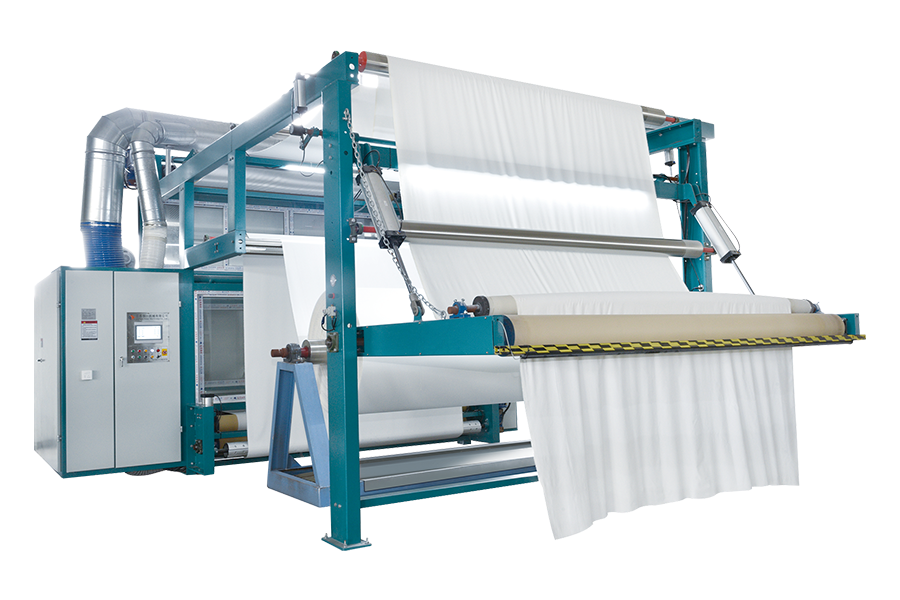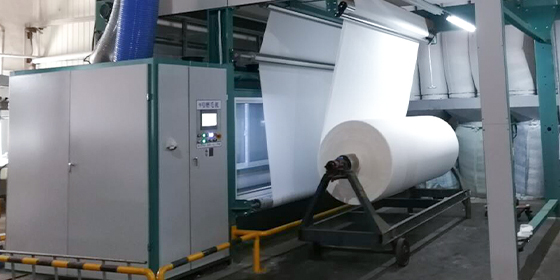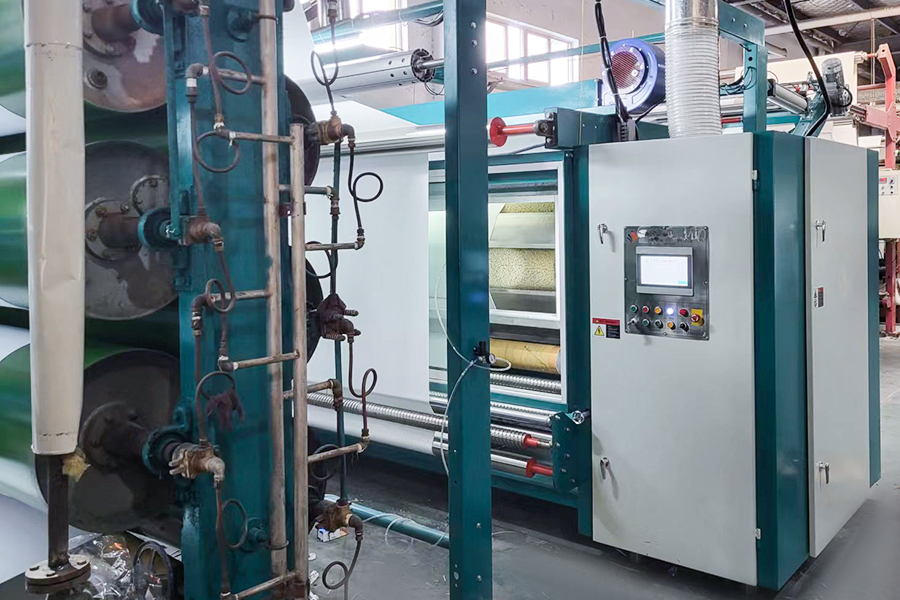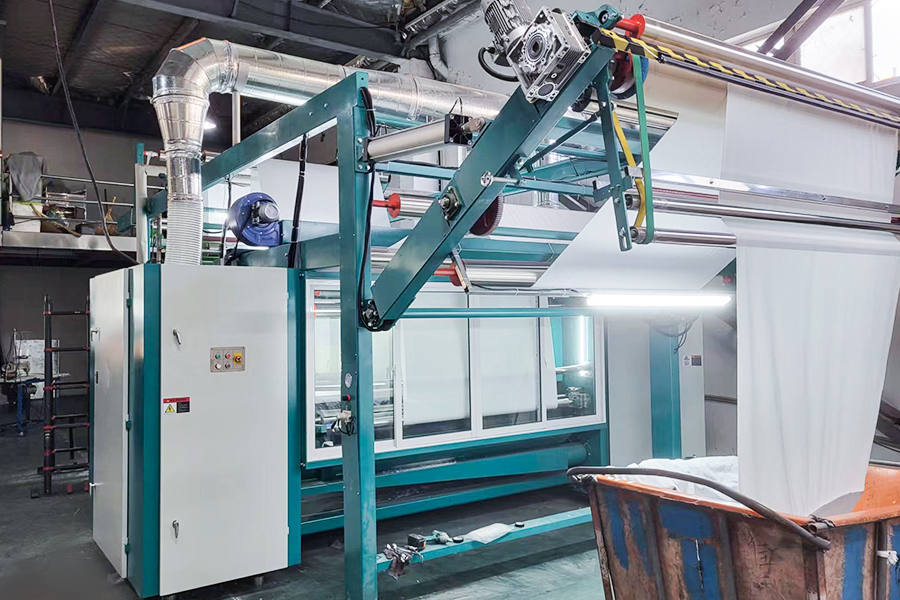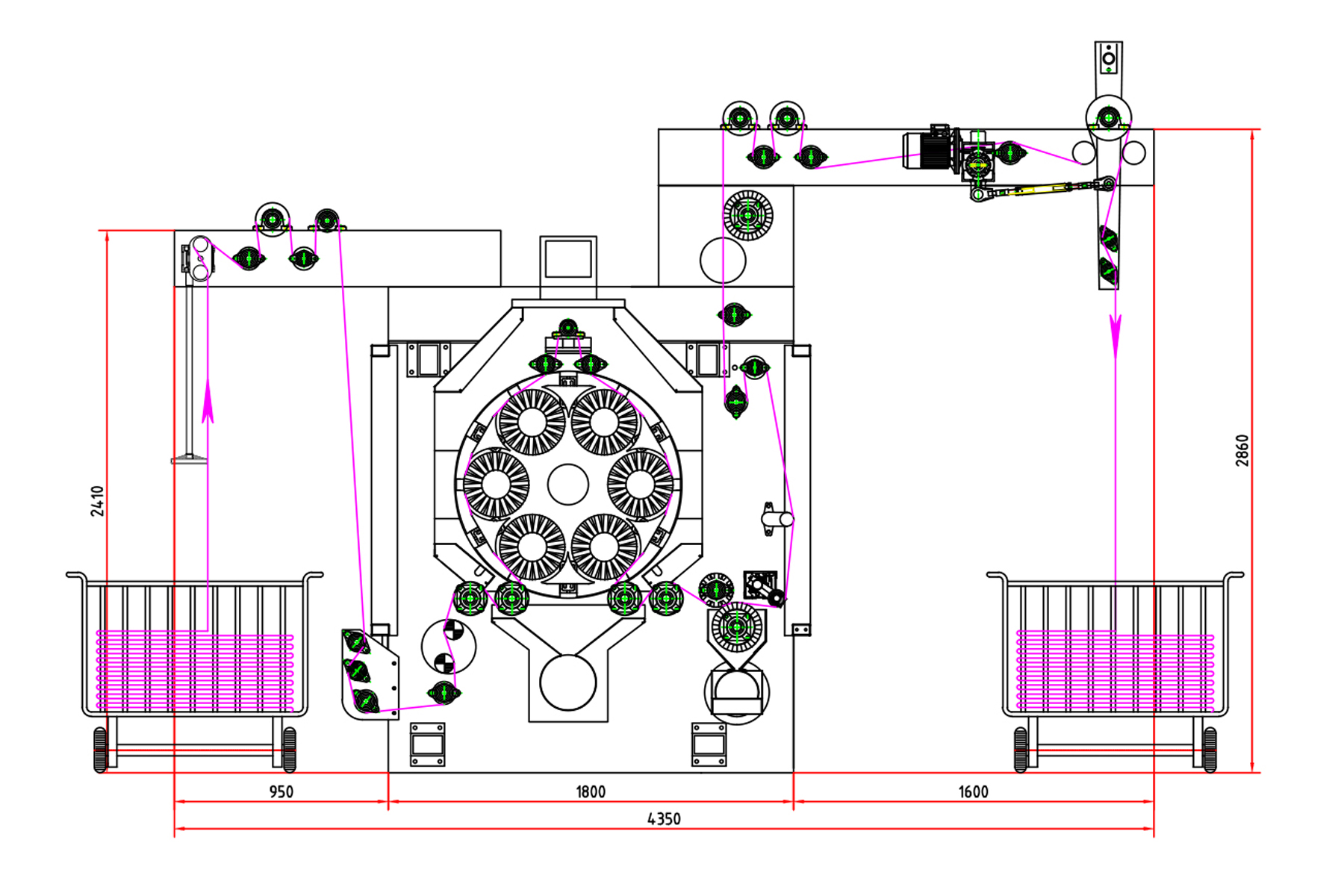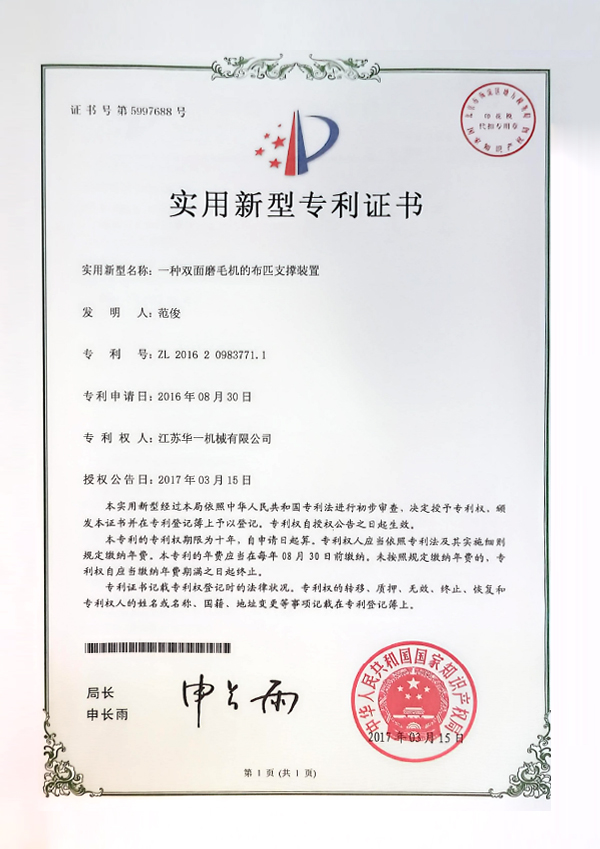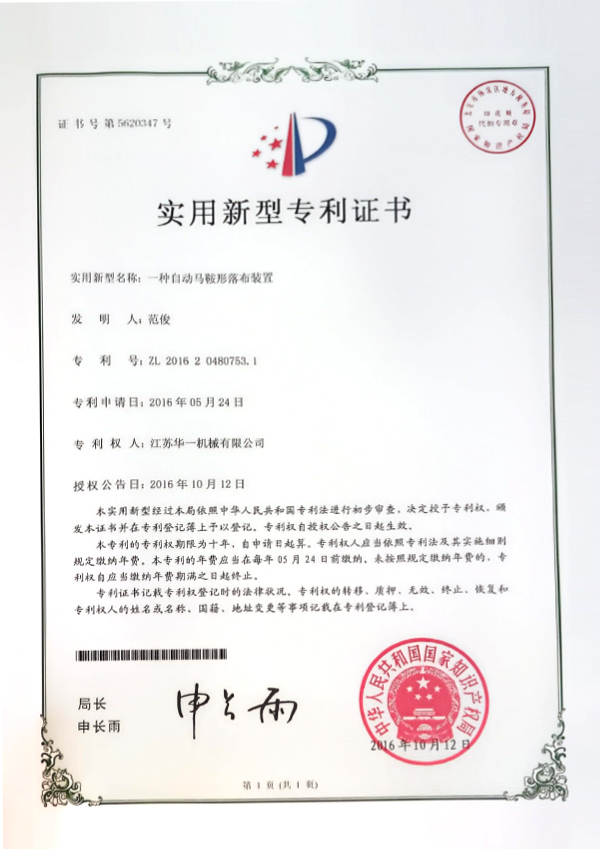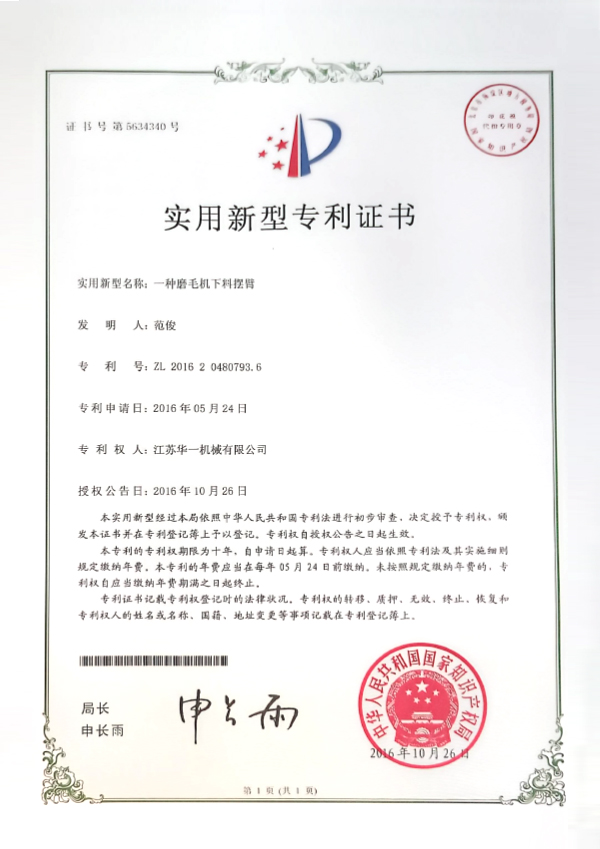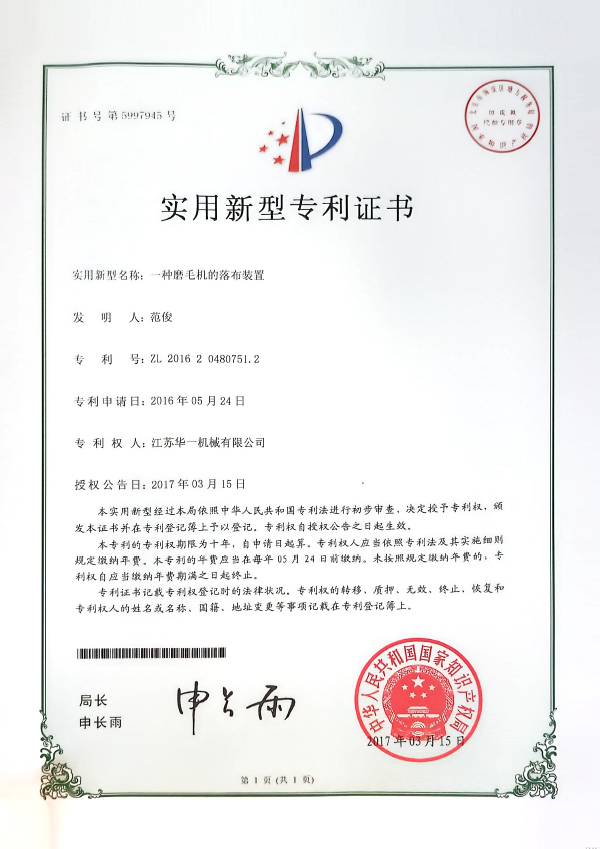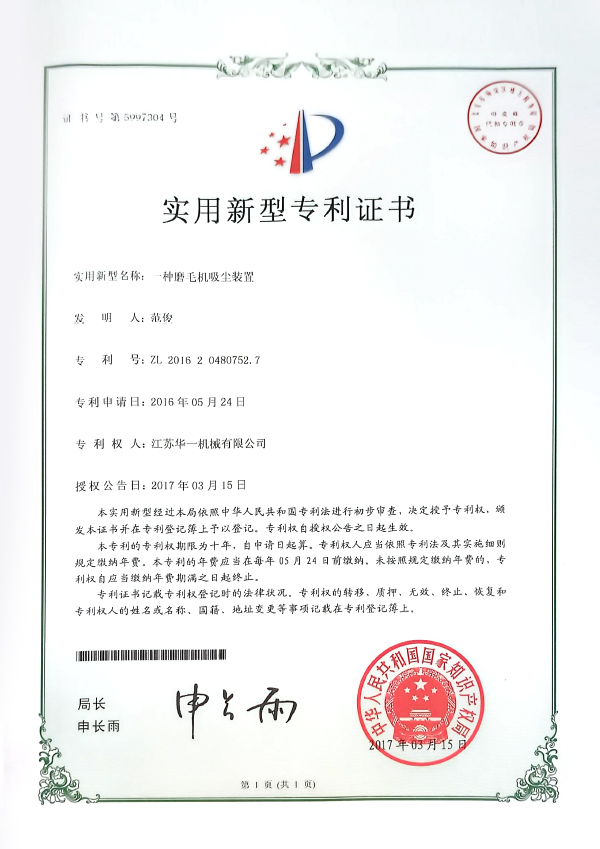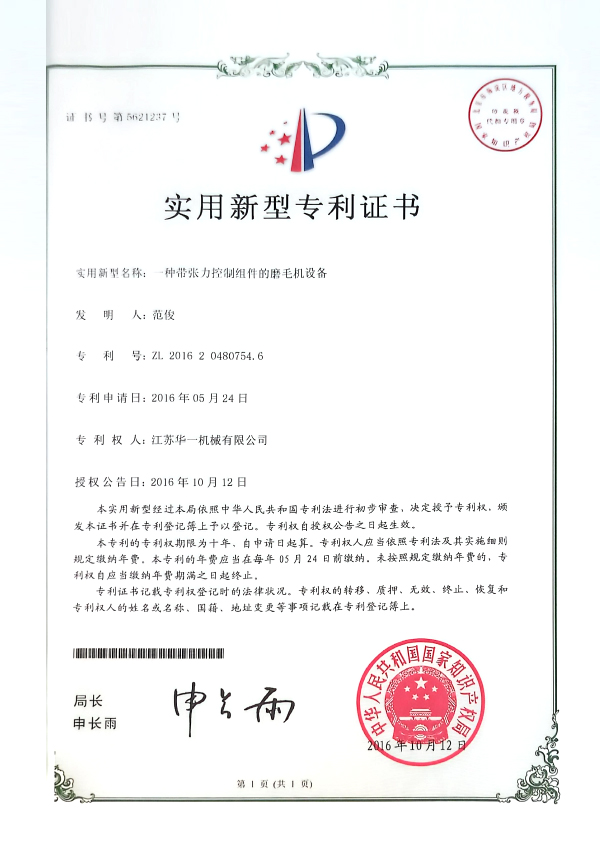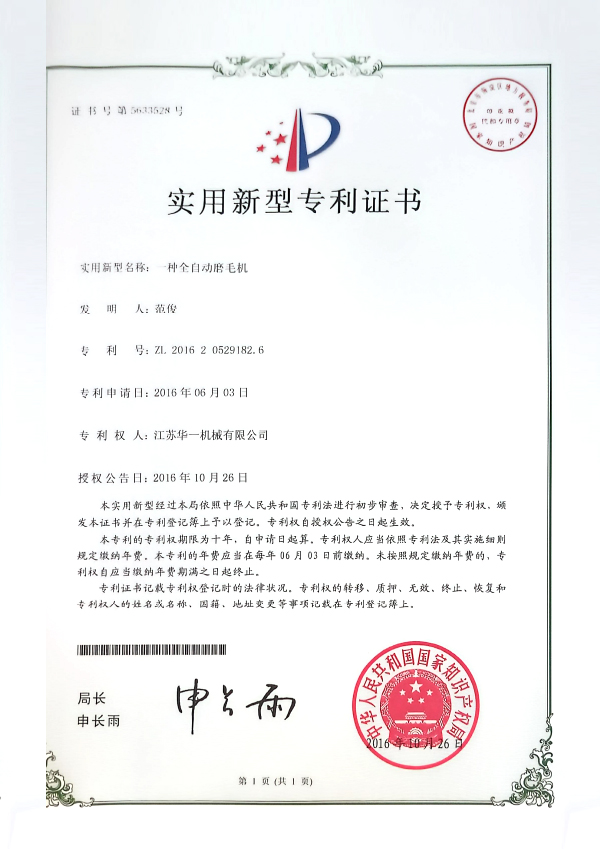How does the planetary structure deliver a revolutionary sanding effect?
The "planetary" sanding structure, derived from advanced concepts in high-end textile finishing equipment, features multiple grinding rollers that simultaneously orbit around a main axis while independently rotating. This structure derives its name from its imitation of the "planetary orbits" of celestial bodies. Compared to traditional sanding structures that only move in one direction, it offers a higher contact frequency and a wider coverage angle, marking a significant advancement in sanding equipment technology.
Multi-point dynamic contact delivers a more uniform sanding effect
Conventional sanding machines, constrained by fixed angles and a single feed direction, limit the number of contact points between the rollers and the fabric. This can lead to over-sanding of some areas while leaving others virtually untouched. This is particularly true when working with highly elastic and microscopically irregular fabrics, such as knitted fabrics, which are more susceptible to "sanding" or "missing sanding."
The planetary structure, on the other hand, uses multiple grinding rollers that alternately apply pressure to the fabric surface from multiple directions, achieving 360° coverage of every inch of the fabric surface. This high-frequency, low-pressure, evenly distributed friction method not only effectively activates the surface fuzz of the fabric without damaging the fabric itself, resulting in a finer, more consistent sanding layer.
Adaptive pressure distribution reduces the risk of damage and tearing
As the planetary rollers rotate, they apply continuous yet gentle, surrounding pressure, creating a more polished, rather than tearing, contact with the fabric. This characteristic is particularly well-suited for sensitive fabrics such as ultra-fine yarn, Lycra, Tencel, Modal, and other stretchy knits. These fabrics demand a high velvety feel while also being susceptible to stretching and scratching. The planetary structure maintains constant tension on the fabric, reducing the risk of damage caused by uneven force.
High repeatability supports stable mass production
In industrial production, consistent sanding results are a key criterion for equipment performance. The planetary structure, with its stable mechanical layout and strong self-cleaning capabilities, significantly reduces manual adjustment errors and uneven abrasive wear, ensuring consistent sanding quality over long periods of continuous operation and avoiding quality issues such as excellent results in the first batch and poor quality in subsequent batches.
Combined with high-performance abrasives, it adapts to a wider range of fabrics
The Planetary Carbon (Ceramic) Fiber Sueding Machine for Knitting X-Model incorporates carbon fiber or ceramic fiber abrasives based on its planetary structure. These new abrasives offer high hardness, high temperature resistance, and resistance to dulling, making the sanding process more durable and stable. Traditional sanding cloths or wire wheels often suffer from heat buildup and abrasive fatigue when sanding high-density fabrics. Ceramic abrasives, however, maintain their grinding performance over time and are particularly suitable for high-quality knit finishing requirements.
The carbon fiber or ceramic fiber abrasives used in the Planetary Carbon (Ceramic) Fiber Sueding Machine for Knitting X-Model offer advantages such as high temperature resistance, wear resistance, and stable grinding force, making them particularly suitable for highly elastic and soft materials such as knitted fabrics. Conventional sanding machines often suffer from uneven bristle pick-up and high breakage rates, but the planetary structure's enveloping force significantly reduces these risks.
How does planetary sanding technology redefine knit fabric finishing?
Traditional sanding methods struggle with flexible production for diverse product categories, multiple batches, and small quantities. The X-Model planetary sanding machine, as a next-generation sanding machine, effectively addresses these issues.
What traditional pain points does planetary sanding technology address?
Traditional sanding processes typically utilize fixed grinding heads or single-axis structures, which present significant shortcomings in the following areas:
Uneven wear mark distribution: Fixed angles and force points can easily cause localized over-abrasion on the fabric surface, impacting aesthetics and feel;
Heat concentration: Prolonged operation can easily cause the abrasive to heat up, leading to carbonization of the surface yarn and even stiffening of the fabric;
Excessive equipment vibration: Concentrated loads can cause unstable machine operation, compromising sanding accuracy;
Poor consistency: Under continuous operation, the sanding effect can fluctuate significantly as the abrasive wears.
The X-Model utilizes a multi-head planetary design, with multiple grinding heads rotating around the center of the fabric surface, simultaneously rotating at high speed. Each part is evenly treated at different angles and paths, dispersing sanding heat and reducing carbonization. This ensures smoother machine operation and effectively minimizes the risk of skipped stitches and misalignment. This makes it suitable for fabrics requiring the most demanding surface finishes, such as Lycra, Modal, and Tencel.
Why Choose Carbon (Ceramic) Fiber Abrasives? How Do They Improve Product Quality?
Another key breakthrough of the Planetary Carbon (Ceramic) Fiber Sueding Machine for Knitting X-Model is the use of high-performance carbon fiber or ceramic fiber abrasives. These abrasives offer unmatched advantages over traditional abrasives for sanding knitted fabrics:
Excellent Wear Resistance: Carbon fiber and ceramic fiber materials possess exceptional hardness and thermal stability, resisting wear and shedding even in high-frequency, continuous operation environments. This extends the life of the abrasive head and reduces production interruptions caused by frequent replacement.
Softer and finer sanding: Traditional steel rollers or sandpaper abrasives can easily damage the yarn, causing severe feathering. In contrast, carbon/ceramic abrasives utilize a "micro-cutting" principle to gently treat the fabric surface, enhancing the surface's velvety feel while preserving the original fabric's ductility and structural stability. Compatible with a wider range of fabrics: Whether it's lightweight knits, stretch fabrics, or high-density polyester or blended fabrics, this type of abrasive can precisely control the sanding depth by fine-tuning the grinding head pressure and line speed, achieving a customized finishing effect suitable for a wide range of styles.
How does the planetary structure improve production efficiency and process stability?
High efficiency and controllability are always the core goals on the production side. The Planetary Carbon (Ceramic) Fiber Sueding Machine for Knitting X-Model also provides innovative solutions in this regard:
Multi-head linkage for continuous operation without fatigue: The planetary structure's multi-head linkage design reduces the load on each grinding head, sharing heat and pressure, significantly reducing equipment fatigue. It maintains consistent sanding on the fabric surface even during long-term operation without frequent adjustments or cooling pauses, offering far greater stability than traditional structures.
Intelligent tension control system: This equipment is equipped with a tension detection and automatic correction system that detects tension fluctuations on the fabric surface in real time and automatically adjusts the fabric speed and feed angle to prevent fabric stretching and deformation. This is particularly important for elastic knitted fabrics, effectively preventing process defects such as "tiger stripes" and "waving."
Quick-release modular design for easy maintenance: The X-Model utilizes a modular structure, allowing all grinding heads and drive systems to be individually disassembled for maintenance. Replacing grinding heads takes only minutes, significantly reducing downtime and providing greater flexibility for fast-paced, multi-style orders.
What are the advantages of the Planetary Carbon (Ceramic) Fiber Sueding Machine for Knitting X-Model for small-batch, high-variety production?
Modern apparel production is rapidly shifting toward personalization and flexibility. The X-Model's design fully addresses this trend:
Supports quick switching between fabric types and parameter presets: The machine features multiple memory settings, enabling quick recall of process parameters for different fabrics, reducing manual adjustments.
Adaptable to a wide range of fabric widths and weights: From lightweight underwear to thick sweatshirts, it can handle a wide range of fabrics.
Energy-saving and environmentally friendly: The long life of the carbon/ceramic abrasives also means less consumables, optimizing overall energy consumption and contributing to green production.

 简体中文
简体中文 English
English عربى
عربى